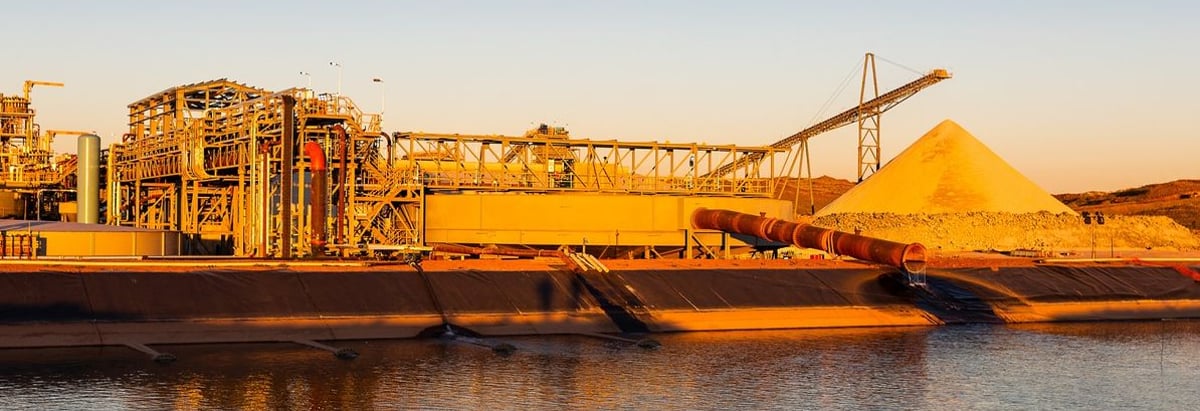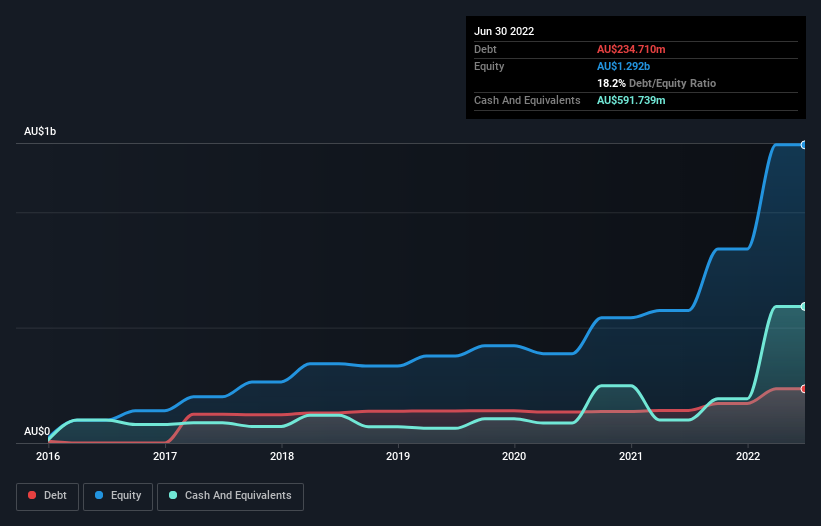
The external fund manager backed by Berkshire Hathaway's Charlie Munger, Li Lu, makes no bones about it when he says 'The biggest investment risk is not the volatility of prices, but whether you will suffer a permanent loss of capital.' When we think about how risky a company is, we always like to look at its use of debt, since debt overload can lead to ruin. We can see that Pilbara Minerals Limited (ASX:PLS) does use debt in its business. But should shareholders be worried about its use of debt?
What Risk Does Debt Bring?
Generally speaking, debt only becomes a real problem when a company can't easily pay it off, either by raising capital or with its own cash flow. If things get really bad, the lenders can take control of the business. However, a more common (but still painful) scenario is that it has to raise new equity capital at a low price, thus permanently diluting shareholders. Of course, debt can be an important tool in businesses, particularly capital heavy businesses. When we examine debt levels, we first consider both cash and debt levels, together.
Check out the opportunities and risks within the AU Metals and Mining industry.
How Much Debt Does Pilbara Minerals Carry?
As you can see below, at the end of June 2022, Pilbara Minerals had AU$234.7m of debt, up from AU$141.2m a year ago. Click the image for more detail. But on the other hand it also has AU$591.7m in cash, leading to a AU$357.0m net cash position.

How Strong Is Pilbara Minerals' Balance Sheet?
We can see from the most recent balance sheet that Pilbara Minerals had liabilities of AU$337.3m falling due within a year, and liabilities of AU$349.0m due beyond that. Offsetting this, it had AU$591.7m in cash and AU$295.4m in receivables that were due within 12 months. So it actually has AU$200.7m more liquid assets than total liabilities.
Having regard to Pilbara Minerals' size, it seems that its liquid assets are well balanced with its total liabilities. So while it's hard to imagine that the AU$15.3b company is struggling for cash, we still think it's worth monitoring its balance sheet. Succinctly put, Pilbara Minerals boasts net cash, so it's fair to say it does not have a heavy debt load!
It was also good to see that despite losing money on the EBIT line last year, Pilbara Minerals turned things around in the last 12 months, delivering and EBIT of AU$767m. When analysing debt levels, the balance sheet is the obvious place to start. But it is future earnings, more than anything, that will determine Pilbara Minerals's ability to maintain a healthy balance sheet going forward. So if you want to see what the professionals think, you might find this free report on analyst profit forecasts to be interesting.
Finally, while the tax-man may adore accounting profits, lenders only accept cold hard cash. Pilbara Minerals may have net cash on the balance sheet, but it is still interesting to look at how well the business converts its earnings before interest and tax (EBIT) to free cash flow, because that will influence both its need for, and its capacity to manage debt. Over the most recent year, Pilbara Minerals recorded free cash flow worth 68% of its EBIT, which is around normal, given free cash flow excludes interest and tax. This cold hard cash means it can reduce its debt when it wants to.
Summing Up
While we empathize with investors who find debt concerning, you should keep in mind that Pilbara Minerals has net cash of AU$357.0m, as well as more liquid assets than liabilities. And it impressed us with free cash flow of AU$519m, being 68% of its EBIT. So we don't think Pilbara Minerals's use of debt is risky. When analysing debt levels, the balance sheet is the obvious place to start. However, not all investment risk resides within the balance sheet - far from it. Be aware that Pilbara Minerals is showing 1 warning sign in our investment analysis , you should know about...
Of course, if you're the type of investor who prefers buying stocks without the burden of debt, then don't hesitate to discover our exclusive list of net cash growth stocks, today.
New: Manage All Your Stock Portfolios in One Place
We've created the ultimate portfolio companion for stock investors, and it's free.
• Connect an unlimited number of Portfolios and see your total in one currency
• Be alerted to new Warning Signs or Risks via email or mobile
• Track the Fair Value of your stocks
Have feedback on this article? Concerned about the content? Get in touch with us directly. Alternatively, email editorial-team (at) simplywallst.com.
This article by Simply Wall St is general in nature. We provide commentary based on historical data and analyst forecasts only using an unbiased methodology and our articles are not intended to be financial advice. It does not constitute a recommendation to buy or sell any stock, and does not take account of your objectives, or your financial situation. We aim to bring you long-term focused analysis driven by fundamental data. Note that our analysis may not factor in the latest price-sensitive company announcements or qualitative material. Simply Wall St has no position in any stocks mentioned.
About ASX:PLS
Pilbara Minerals
Engages in the exploration, development, and operation of mineral resources in Australia.
Reasonable growth potential with adequate balance sheet.
Similar Companies
Market Insights
Community Narratives


